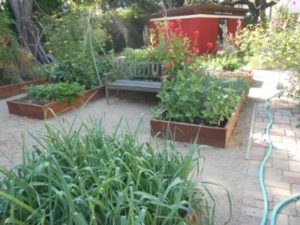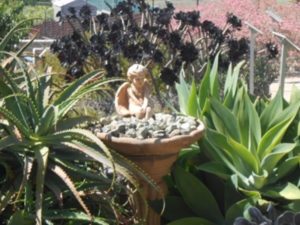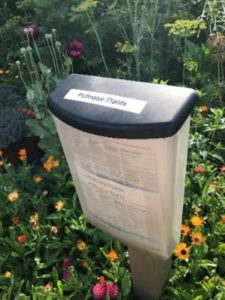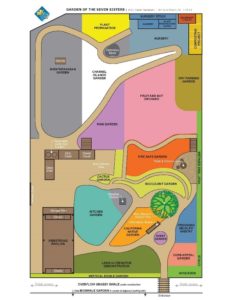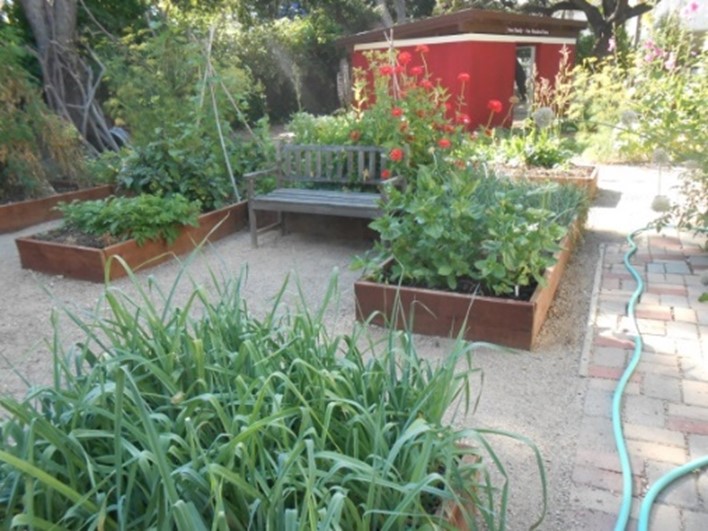
Develop a Demonstration Garden
A demonstration garden can educate about many different topics. Consider turning an underused piece of property or a portion of an existing park into one or more demonstration gardens for residents and visitors.
Many people move from one part of the country to another and they may not understand the proper landscape practices and plants to use in the area they moved to. A demonstration garden, through experiential learning, can educate about many different topics including native plants, pollinator, herbs, vegetables, deer resistant, lawn alternative plants, low water use, curb appeal, home landscaping, wildlife, fruit and nut orchard, fire resistive, fragrant plants, rain garden, or a locally pertinent topic. The addition of water will increase the garden’s use by wildlife. Each garden design will be unique, responding to its site and creating its own experience. Within the garden provide a map, and informational and self-guiding tour brochures which may be housed under a kiosk providing protection from the elements. Use interpretative signage throughout the garden and plant identification labels. To encourage visitation, provide walkways with ADA accessibility. Seating in shady and sunny areas will encourage visitors to linger.
Community gardens are also potential locations for a demonstration garden. Community gardens bring people together through a shared interest in fresh vegetables, herbs, and flowers. A range of other healthy and happy activities follow such as food sharing, farm to table dinners, and creative food preparation. Consider turning a portion of the garden into a demonstration garden. This can be a good way to cultivate volunteers.
The University of California Master Gardener Seven Sisters Demonstration Garden located in San Luis Obispo has a beautiful display of 15 garden plots. As an outdoor classroom, the garden presents a rich opportunity for learning and includes composting and plant propagation. It also serves as a training garden for volunteers.
